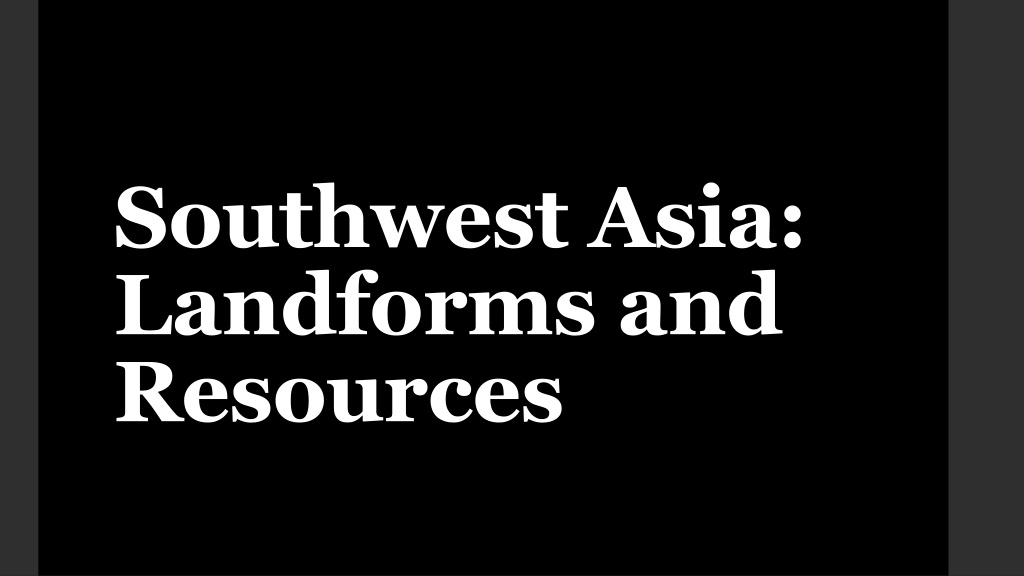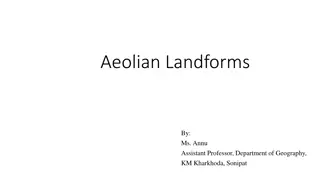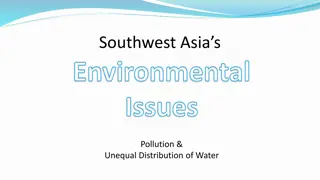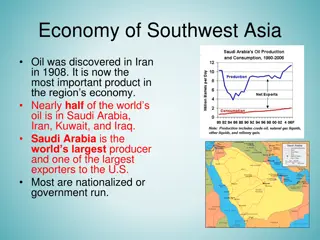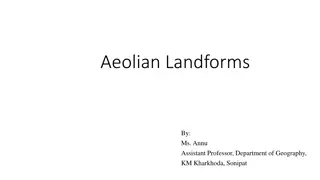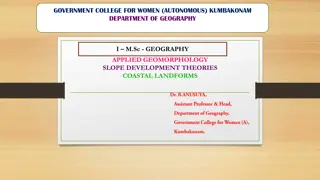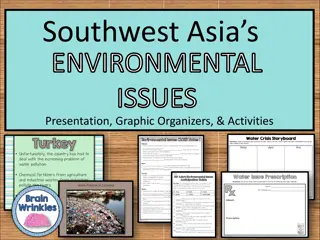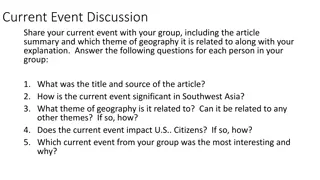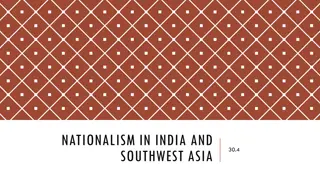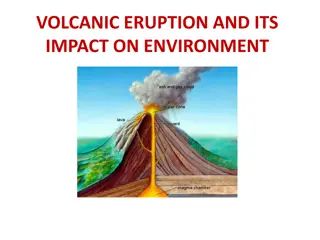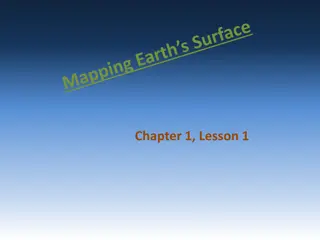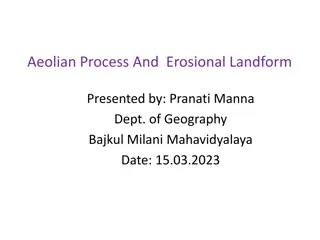Southwest Asia: Landforms and Resources
Southwest Asia, particularly the Arabian Peninsula, is rich in diverse landforms and resources. The region is characterized by major mountain ranges like the Hindu Kush and Zagros Mountains, important bodies of water such as the Tigris and Euphrates Rivers, and natural features like wadis and the Jordan River. These geographical elements have played significant roles in shaping the history, civilizations, and economy of this area. Oil reserves are a crucial resource in Southwest Asia, with water scarcity being a challenge in desert regions. The Red Sea and the Suez Canal serve as vital trade routes connecting Europe and Africa.
Download Presentation

Please find below an Image/Link to download the presentation.
The content on the website is provided AS IS for your information and personal use only. It may not be sold, licensed, or shared on other websites without obtaining consent from the author. Download presentation by click this link. If you encounter any issues during the download, it is possible that the publisher has removed the file from their server.
E N D
Presentation Transcript
Southwest Asia: Landforms and Resources
The Arabian Peninsula
The Red Sea and the Suez Canal The Red Sea, on the west coast of the Arabian Peninsula, connects to the Suez Canal This canal is very important for trade in both Europe and Africa
Wadis: riverbeds that remain dry except during the rainy season Located throughout the Arabian Peninsula
Major Mountain Ranges Hindu Kush Mountains: stretches between Central Afghanistan and Northern Pakistan
Zagros Mountains: primarily in Iran Isolates the country from the rest of SW Asia
Important Bodies of Water The Tigris and Euphrates Rivers: supported several ancient river valley civilizations in the Fertile Crescent Sumerians, Assyrians, Babylonians
The rivers are still very important today for agriculture The two rivers flow parallel to each other for hundreds of miles before joining and soon after emptying into the Persian Gulf
Jordan River: serves as a natural boundary between Israel and Jordan Flows into the Dead Sea, a landlocked salt lake
Natural Resources of the world s oil reserves are located in southwest Asia The United States depends heavily on these oil reserves In some areas, the most valuable resource is water In mountainous countries such as Turkey, Iran, Lebanon, and Afghanistan, water is plentiful In regions containing deserts, rain is very scarce
